Table of Contents

The 10 Most Common Sleeping Positions and What They Mean

Table of Contents

The 10 Most Common Sleeping Positions and What They Mean
According to our research, two thirds (65%) of British pet owners will share the bed with their cat or dog tonight. It’s understandable. It can be hard to resist those puppy-dog eyes, or that loving purr when our pet's come to settle in for the night.
But did you know that by observing our pet's sleeping position, we can tell a lot about the special pet-owner bond we share with them?
We wanted to know more, so asked 2,000 Brits to reveal the 10 most common sleeping positions we adopt with our four-legged friends, and enlisted the help of leading animal behaviourist, Professor Peter Neville to give us insight into their meaning.
The Faithful
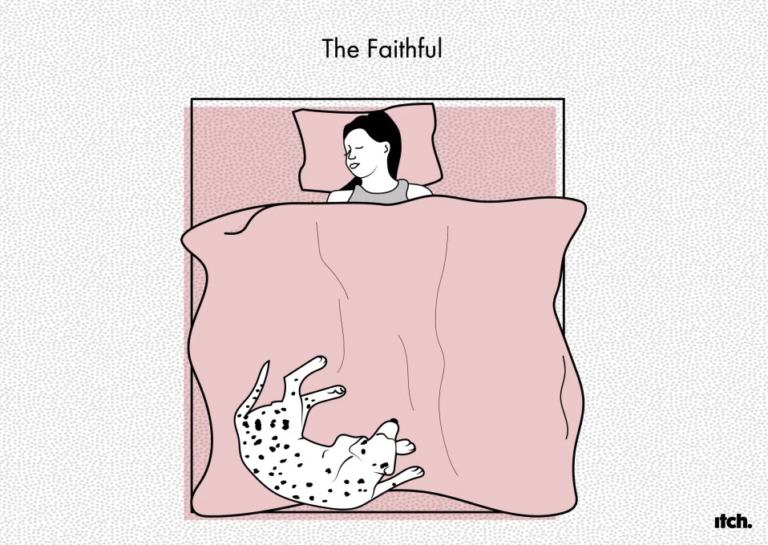
The most popular position among pets & owners. This is as close as your pet can be to you while keeping an easy escape route if you’re a restless sleeper.
Peter Neville said:
“While ‘The Faithful’ position may seem like the actions of a dutiful and worshipping dog, you’re horizontal in bed and so there is no respectful acknowledging posturing. It’s more likely that you’re a restless sleeper and this is as close as he or she can be to you while keeping an easy escape route.”
The Knee Knuzzle
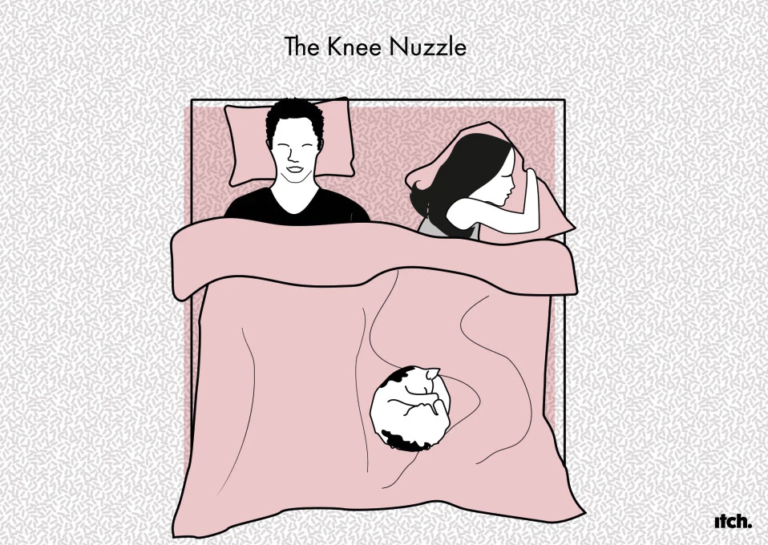
The second most popular position is the Knee Nuzzle, where your pet nestles in the bend of your legs as you lie in the foetal position.
Warmth and all-enveloping security are the key attractions here as you all curl up in that ‘artificial womb’ together. This pet can be more than happy to hand over all responsibility for their well-being to you as if they are a puppy or kitten again. In this perfectly protected environment, they don’t need to make any more decisions and literally sleep like a baby.
The Donut Diver
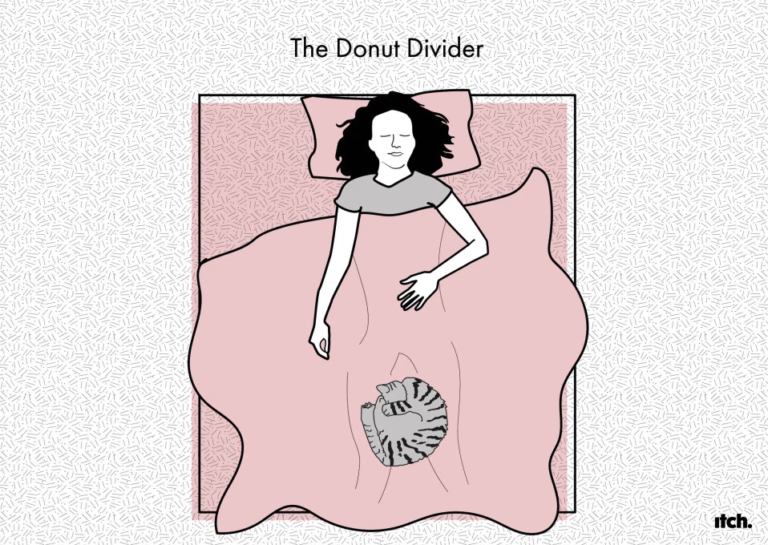
The third most popular position is the Donut Divider where your dog or cat curls up in a ball between your legs. Smaller pets can enjoy the comforting compression of your legs either side and blankets above and below, provided you stay still of course.
Both cats and dogs are able to hear far higher frequencies of sound that are ‘ultrasonic’ to us human, so by getting themselves in a sound proofed warm ‘bubble’ bordered by our legs can help protect them from any unwanted noises that might disturb them.
The Wall
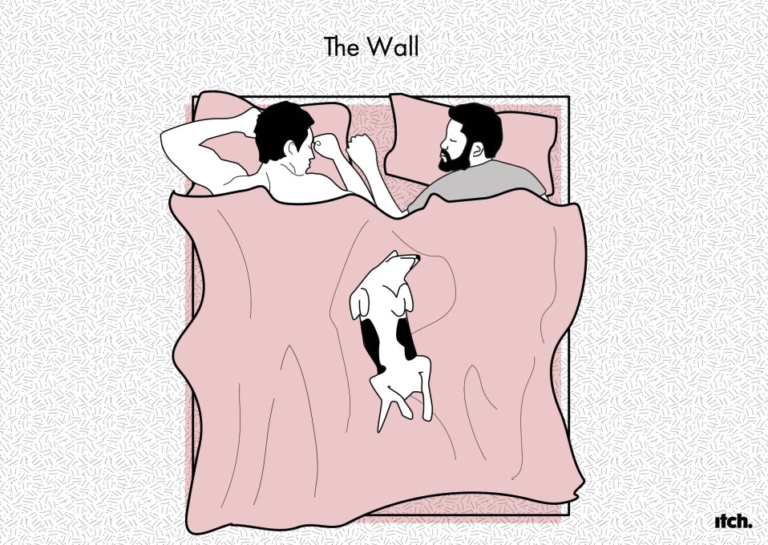
Number four on the list of most favoured sleeping positions is The Wall where your four-legged companion establishes themselves between you and your partner – a seemingly innocent position for warmth and security.
There may be an element of strategy here too as dogs, and sometimes cats, that feel especially bonded to one partner might just be keeping the other at distance.
The Pillow Bandit
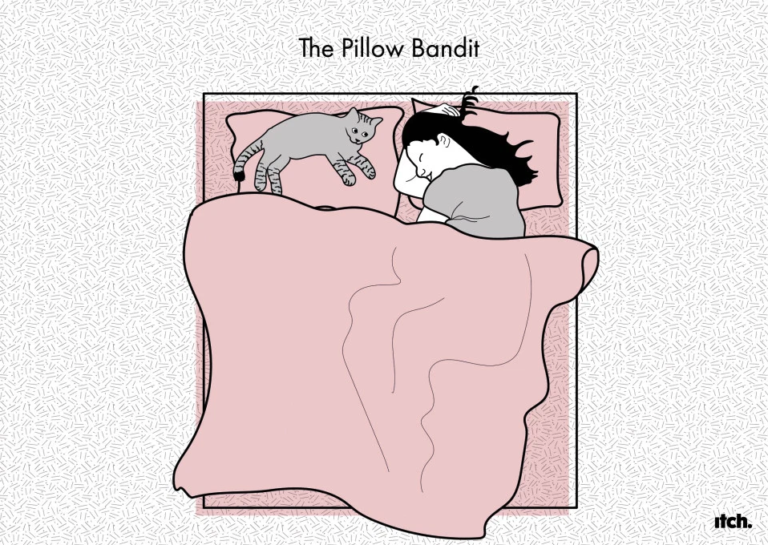
In fifth place is the Pillow Bandit whereby your pet takes over the entire pillow. Normally the preserve of smaller dogs, and cats who find the extra softness and comfort of the pillow.
It is a less likely sleeping position if you snore but works nicely for your pet as your face is exposed in the morning ready to be targeted with a rub or a lick to ensure that breakfast is delivered pronto.
The Under-Cover Lover
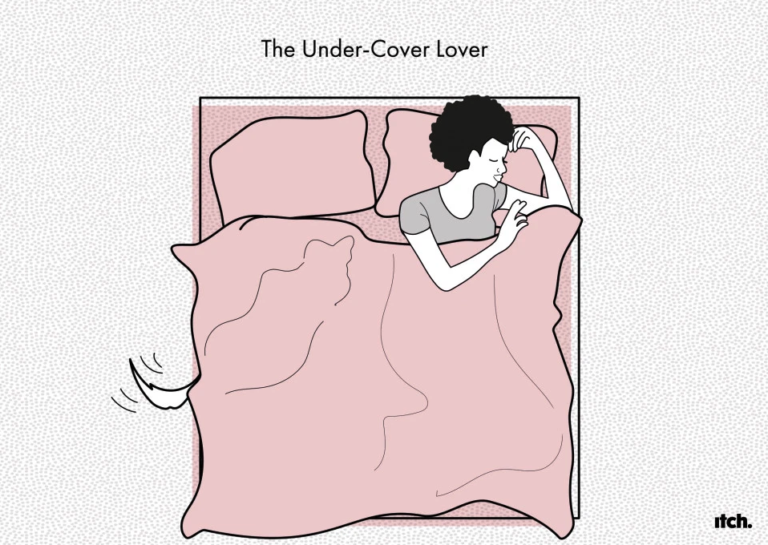
The Under-Cover Lover is the sixth most popular position. It’s the ultimate in dark safe dens to hide away in a reassuring warm heap where body smells and pheromones combine to create a comforting ‘scent fug’.
Cats and dogs are notoriously indifferent of their owners breaking wind and this paradoxically might even add to the security of an enveloping ‘common scent’ in sleeping under the duvet! Just as some people sleep better under weighted blankets, some dogs also relax better if they are lightly compressed by bed covers.
The Cuddle Bug
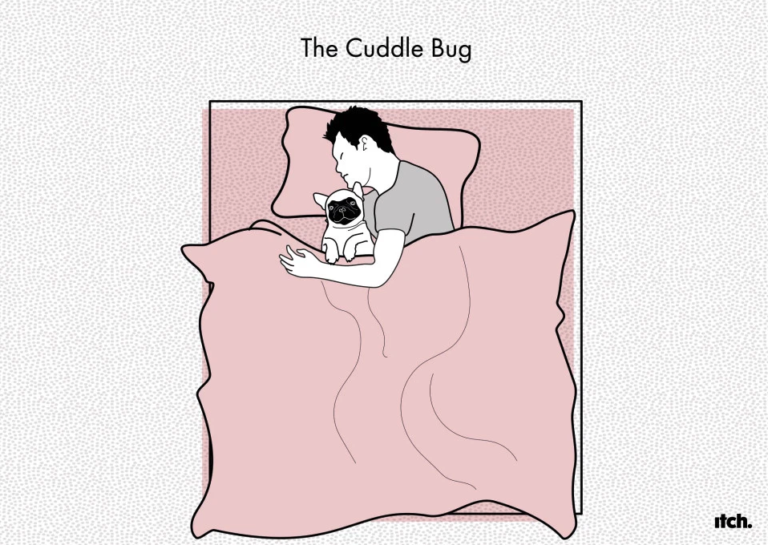
The Cuddle Bug, numero seven on our list, may also aspire to be a fully-fledged Pillow Bandit, and this position may just be a reaffirming step in their process of training you to accept; enjoy their advancing expectations.
The Sneak
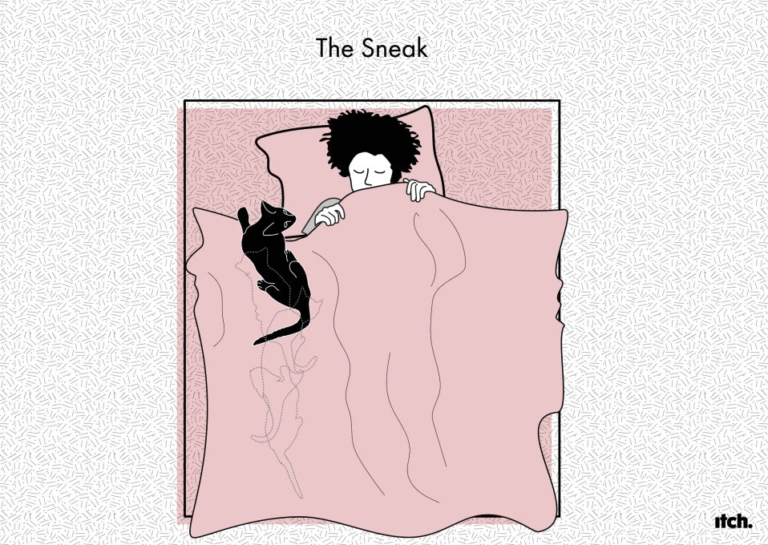
The Sneak dog or cat is probably quite a dependent soul, who loves nothing more than to rest and snooze ever closer to your face, where he can feel your heartbeat. This is the eight most popular list of pet sleeping positions based on our research.
The Superhero

Your superhero sleeping pet came in at number nine. A compromise position by pets who want to keep close and secure contact with you for a while, and enjoy being petted on the head. Being laid out also means they are ready to look after you if there are disturbances at night. Our hero!
The Octopus
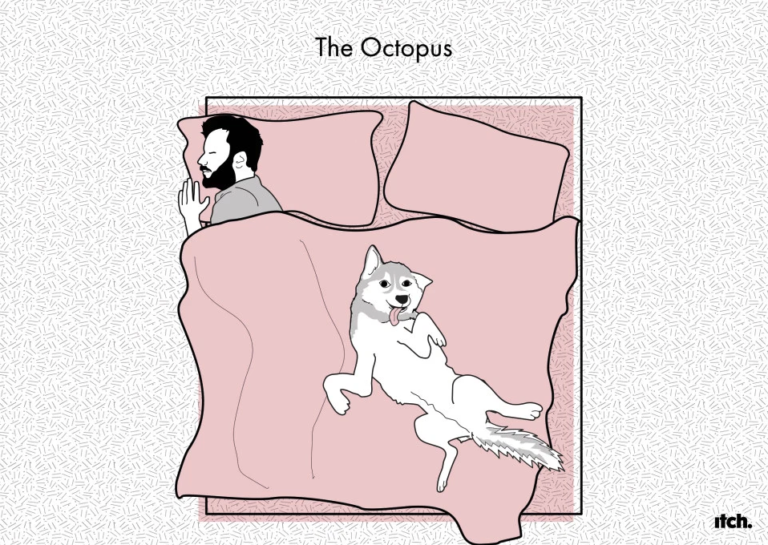
And number ten, The Octopus! You aren’t sure how, but in the morning your pet is sprawled out in the middle of the bed, and you’re right on the edge. You have woken up to a pet Octopus!
Expert animal behaviourist, Professor Neville, gave us some insights into why our pets might be choosing to sleep in the bed with us:
“What’s clear is that sharing the bed with our pets is a normal part of our lives together and testament to the strength of the increasingly co-dependent bond between us and our cats and dogs.
For us, the main element of that bedroom relationship is based on comfort, enjoyment, touch, shared warmth, and increased feelings of security for many dog owners especially.
And while cats and dogs benefit in similar ways, cats regard us as mother figures throughout their lives when in close contact with us; predators outdoors, but forever ‘kittens’ when they cuddle up. Dogs, however, are more like 11-year-old humans in their social behaviour, often acting independently as guarders and hunters, but who all still find comfort and security close up with a parent figure or two when it’s time to sleep. This ‘regressive’ behaviour to be a youngster every night also means that they are quite tolerant of our nocturnal shifting.
When choosing their sleeping positions, our pets are broadly seeking to maintain and enhance their close protecting bond with us, rather than any desire to control us or monopolise territory. But they do cleverly learn to use their appeal and the warm benefits they bring to us to train us to meet their individual night-time needs and desires and to shift our sleeping habits to accommodate theirs!”
According to the study, more than a quarter (27%) said having their pet in bed helps them feel less alone, and 37% like the warmth from their furry bodies. A further three in 10 (30%) also get a feeling of ‘safety and security’ from allowing their cat or dog into the bed with them.
Whilst it emerged that more than half even think their pet is easier to share a bed with than their other human half, it also emerged that 23% of pet owners who share a bed with their dog or cat never think about unwanted guests when they curl up at night together."
Resident Itch Vet, Dr. Zoe Costigan added:
“Whilst there are lots of perceived benefits to co-sleeping with our pets, such as feelings of calm, a sense of security and countering anxiety, it’s important to sleep healthily with our pets. Unwanted bed-guests are never a pleasure!
So, if you suddenly find clusters of itchy red bites - often around your legs or ankles - there’s a chance your bed is also being shared by a flea too.
Treating fleas can be a real headache, especially if they’ve made their way into your bed. I’ve seen so many animals and their owners suffer because they weren’t treated. That’s why I always stress the importance of treating pets on a monthly basis to protect pets from fleas and prevent infestations. An Itch Flea Treatment for dogs or Itch Flea Treatment for cats subscription makes it so easy to protect your pet, and the first month is even free. So, you can rest easy in bed and the rest of the house knowing fleas won’t be joining you.”
Our Vet Team are professionally qualified in veterinary medicines advice and they're here to help. Led by Dr Zoe Costigan, we're no nonsense and knowledgeable experts! Nothing makes us happier than helping you be flea and worm free. We're on the usual socials @itchpet, so slide into our DM's, drop us an email or hop on the phone.
Contact us


Not all cats are cool cats all the time. If your kitty is showing signs of stress or anxiety, there’s one method that’s been proven to help them feel safe, happy and relaxed, and that’s a plug-in pheromone diffuser for cats.

As pet owners, we all know that fleas can be a pesky and persistent problem. These tiny parasites can infest our furry friends, causing discomfort and potential health issues if left unchecked. Fleas are most active during certain periods of the year, which we commonly refer to as the "peak flea season." Here, we dive into the crucial information you need to know about when fleas are most active, when they come out, and whether they prefer hot or cold weather conditions. Armed with this knowledge, you'll be better equipped to protect your beloved pets and your home from these bothersome critters.